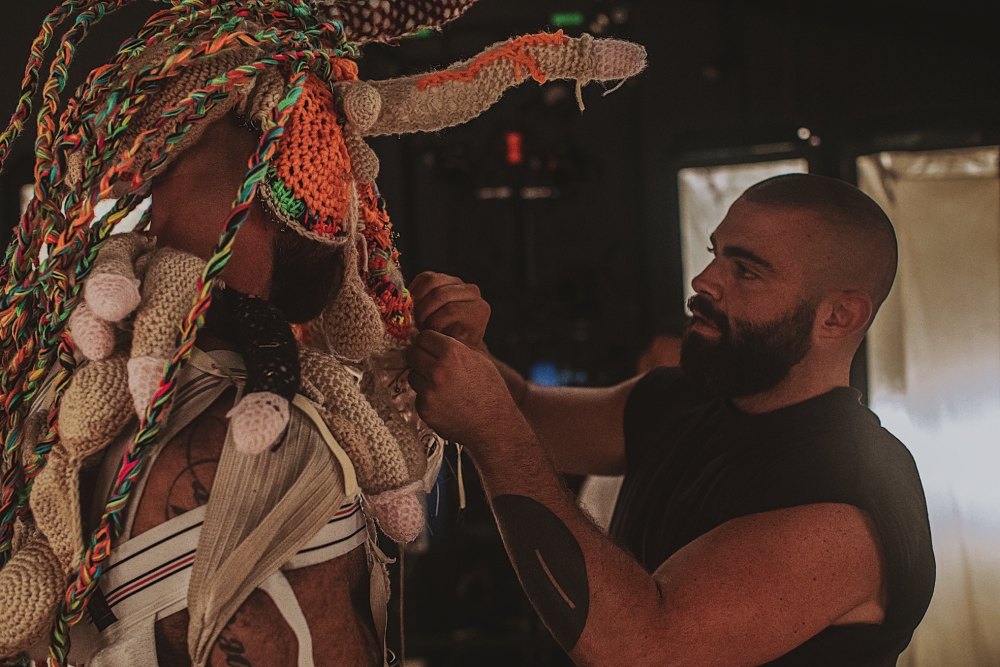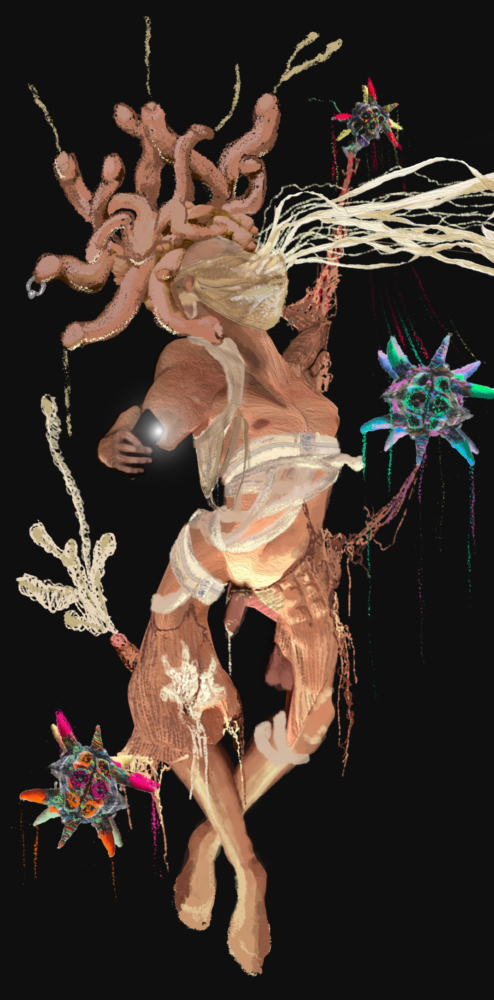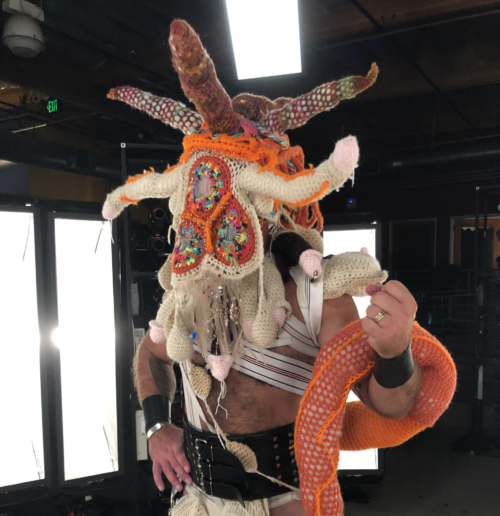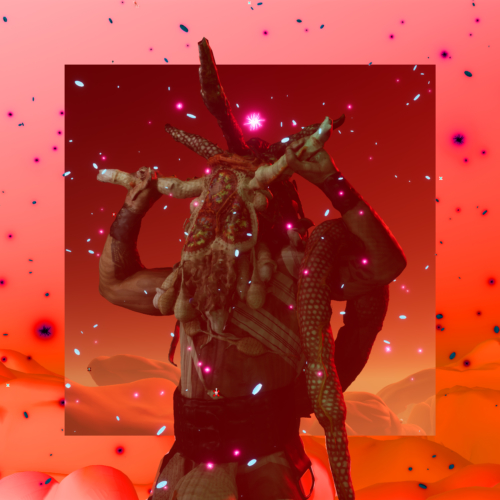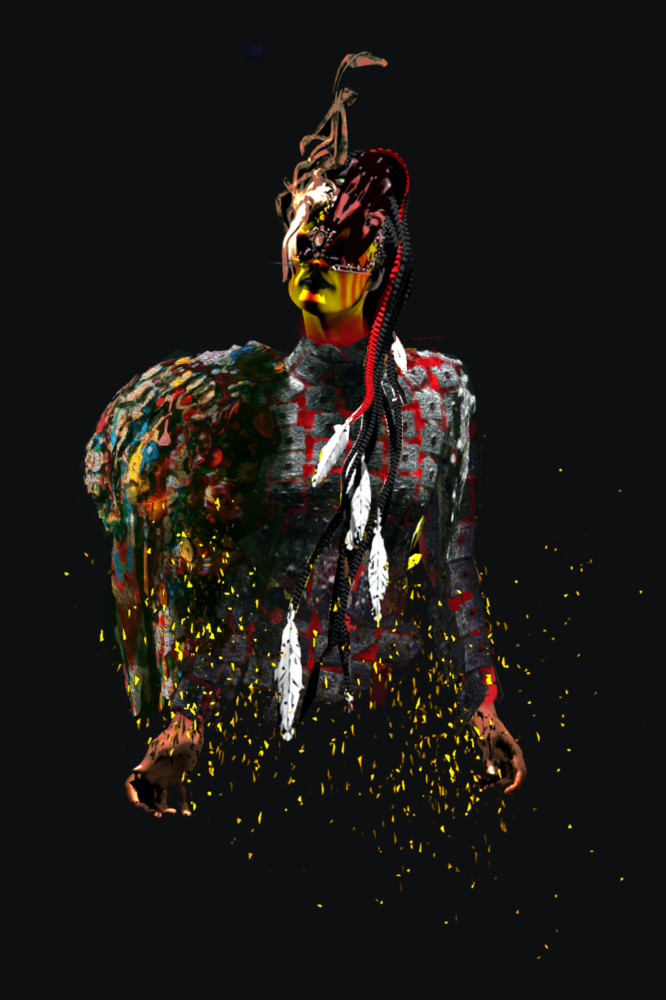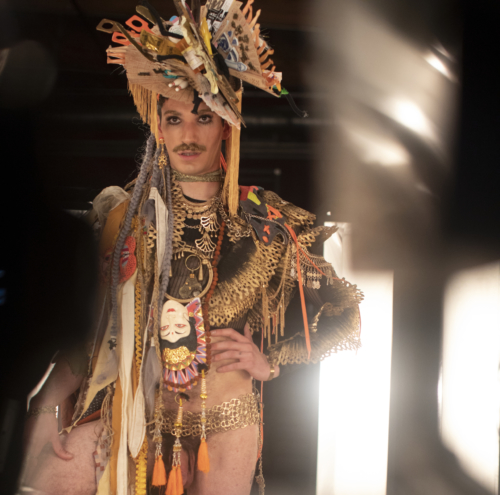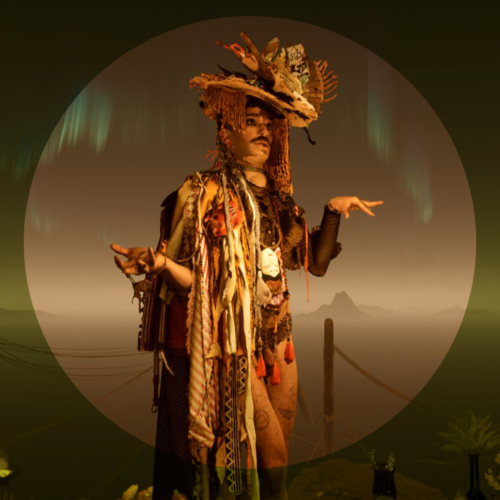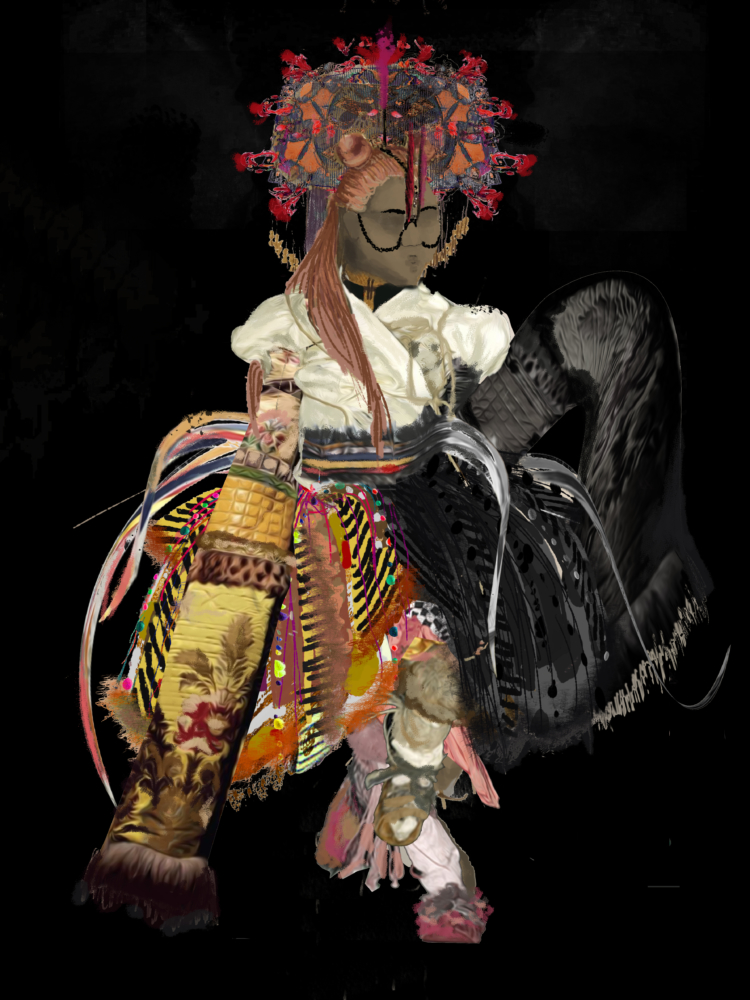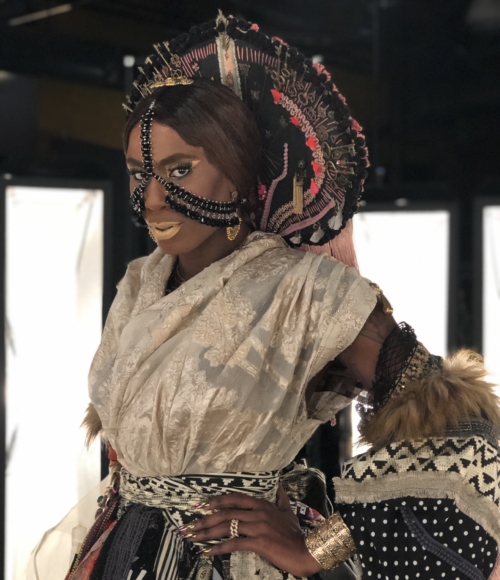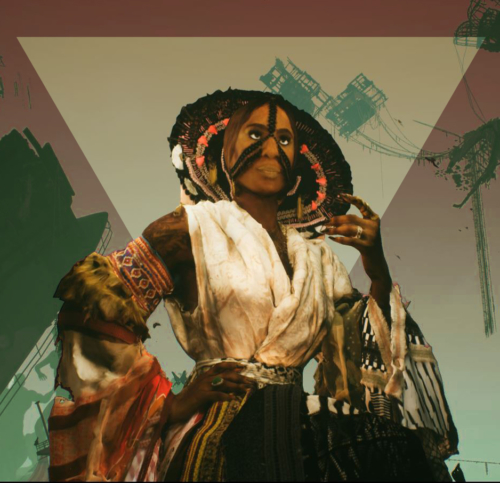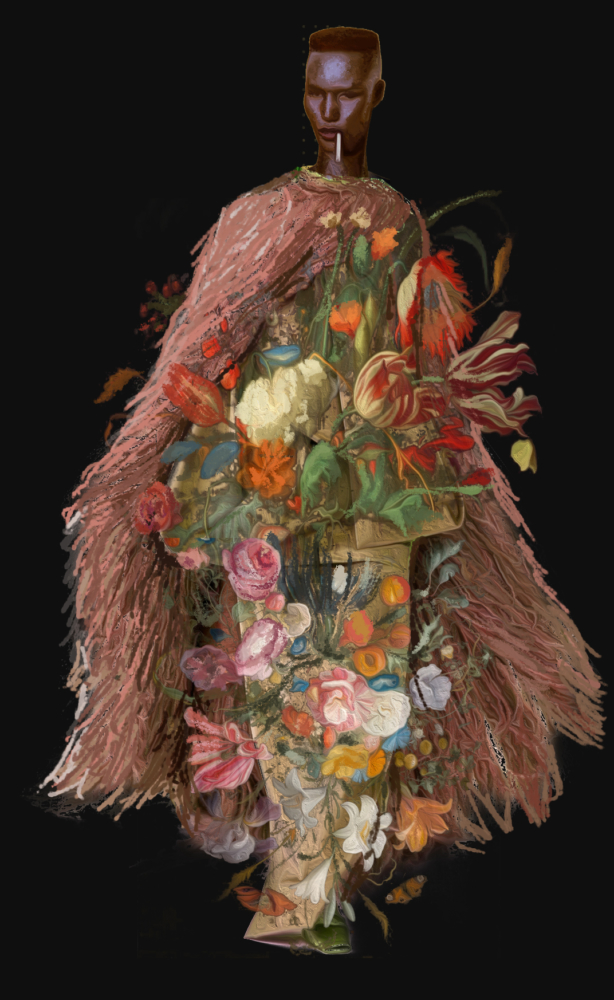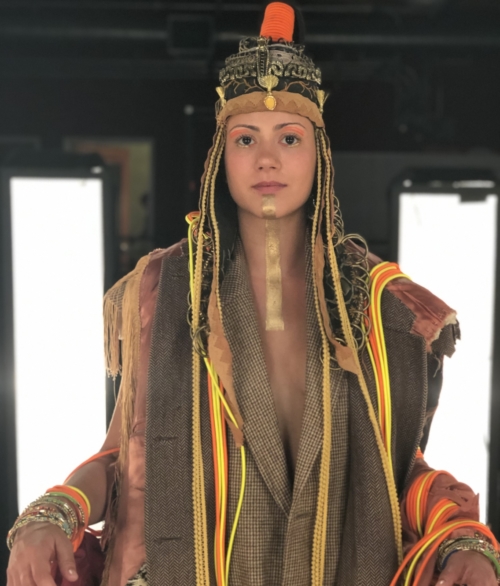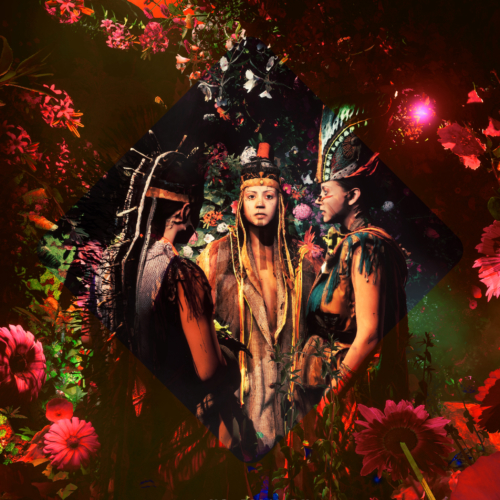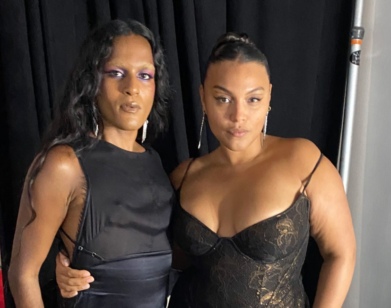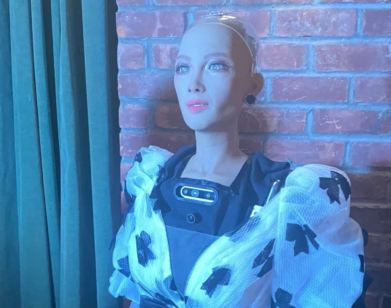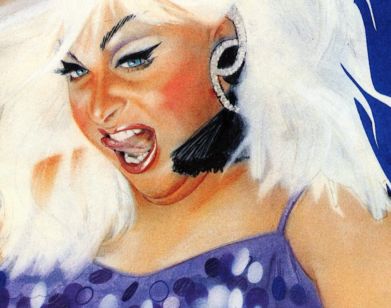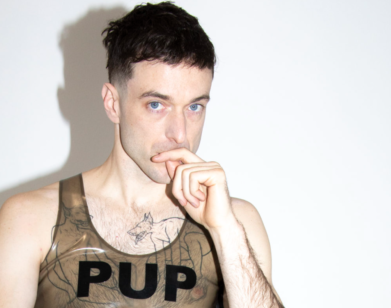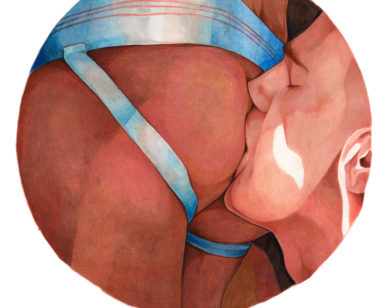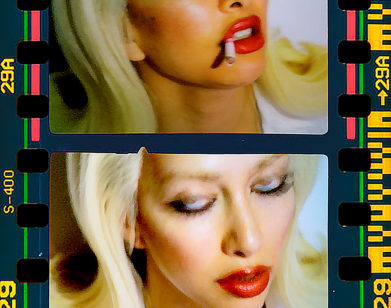From Grace Jones to Grindr: Artist Enrique Agudo Deconstructs His Pantheon of Queer Mythology
“What if Juliet had fallen in love with her cousin Rosalind instead of with Romeo?” says the artist Enrique Agudo during our phone conversation from his home in Los Angeles. We’re discussing his film The Pantheon of Queer Mythology, a seven-minute virtual reality film that made its virtual world premiere at the 2020 Tribeca Film Festival, despite the COVID-19 pandemic. Agudo, an architect by training and self-described “fashion geek,” set out to create a world where he could explore his own identity as well as his artistic interests.
Guided by four queer deities, each representing one or many of the unearthed struggles attacking the community—expectations of masculinity, body dysmorphia, gender identity, racial imbalance, and transphobia within the Queer community—the viewer roams through different worlds and experiences inspired by the artist’s own experiences on Grindr and Scruff, and the people around him, like his friend and muse Gracie Cartier. “We get really comfortable as soon as we’re able to hold hands walking down the street or we’re able to get married,” says Agudo. “I see it crucial that we bring these stories to the forefront so that people can empathize with our communities. So that gay white men can stand by trans people of color in the fight against them not being massacred on the streets or simply getting a job.”
The Pantheon of Queer Mythology aims not only to create unity and give voice to the issues affecting queers every day, but Agudo also hopes to shift the narrative at the core of queer stories. In his world, there is no room to question the power of the queer journey. Instead, Agudo invites viewers to visit and explore his pantheon. Below, the artist explains the inspirations behind the deities, from John Galliano to Grindr’s headless torsos and his own chosen family.
———
CHAPTER 1: AGORETZ
“I’m obsessed with Francis Bacon. I have a tattoo of his. I love figurative painting, and he represents a lot of the things that I love about it. He used distortion as a way to make reference to his own sense of loss in his identity and self search and he would punish himself through paintings because of his own sense of internalized homophobia, versus when he was in love and he would paint his partners. The relationship of how he saw the world and how he saw his lovers through his painting tells a story about conflict, self-discovery, resurgence, and empathy towards oneself. All those things which I’m really interested in. Graphically, I always thought it would be something like his paintings. Obviously I’m a gay man living in Los Angeles so the apps are very much part of how I get laid, find love, go on dates, and even socialize. Sometimes the apps can get the best of us and we become obsessed with getting validation from a specific person. I wanted to show how our own perception of ourselves can be affected by the way that we interact with others through these apps. I thought, “What does Scruff or Grinder look like as space, and what does it look like when you look through all these profiles?” In the end, you come to this creature that is an object of your imagination that has a dick that’s bigger than everyone who you’ve ever seen before and his body is perfect—it’s like a body-horror version of what you set out to find.”
———
CHAPTER 2: IYYANNA AND THE THIRD GENDER
“I actually had a bit of a process with the idea of presenting gender non-binary people in a way that could’ve been perceived as drag, because obviously gender presentation and gender identity are different things. To express gender non-binary in a way that is not vocal or that’s only visual, you would have to present something that is either fem-looking or masc-looking, and I didn’t want to go in that direction. I started looking at Daniel Lismore. They kind of do drag but they consider themselves just a work of art. They walk out the house with an incredibly beautifully curated collection of things as a way to express the artwork that they’re personifying that day. It’s the sort of creature that is underlying in the fashion industry all the time, but it’s a little bit obscure. Kind of like Amanda Lepore maybe 30 years ago. If you were to gather all the objects that have been important to you throughout your life, from a teddy bear when you were a child to that photo that you had on the fridge growing up, to a spoon that was oddly bent in your family kitchen, all those little things that in a way tell the story of your life without you being in it, would that be more revealing of who you are? I really like the idea of presenting gender in a way that isn’t only a binary and in a way doesn’t really address gender at all. It just addresses identity. Lyle XOX, who is an incredible artist, uses everyday objects in order to do this kind of gender performance. I used a lot of my own personal memories to express this deity because it’s also a tool for me to dismantle the perception that I have of myself, because I’ve always been 200 pounds and big and masculine looking, so a lot of people make assumptions of who I am. I’m far more feminine than I appear to be, and I’m far more sensitive than I appear to be. I was exploring my own sense of gender, in a way.”
———
CHAPTER 3: GRIYAH AND THE AUDACITY OF BEING
“Gracie Cartier (@madamejeuge), is one of the most beautiful people that I’ve ever met, not only because she’s physically stunning, but she’s the sort of woman who irradiates positivity, who does so many affirmations in order to check herself but beams that towards other people. She’s a really good example of how the world may have fucked her over and over, and yet, not only does she not take it as the world fucking her over, but she takes it as an opportunity for growth. I need to be depressed for eight months before I can understand that I can grow from this. She has that goddess-like quality of standing regal in the face of adversity. So creating her theme was a little bit like telling the story of a beautiful butterfly in a landfill. I started thinking of gynandromorphs, butterflies and insects that have a genetic mutation that makes them present half-male, half-female, even though they are fully male or fully female. All the fabrics that I used in her costume are actually recycled men’s clothes from dollar stores and thrift stores. The headpiece that she wears is referring to peinetas in Spain: the hair comb that the mother of the bride or the mother of the groom wears. There’s a little bit of Spanish flair in there, and of course, my bigger reference here is John Galliano for Dior in the 2000s.”
———
CHAPTER 4: KAE, EL & RUE AND THE DEATH OF MEN
“Lesbian feminists in the ’70s argued that matriarchal societies would have groups governing. Governments would be made by collectives instead of individual power. In a way, I wanted the Zeus of this mythology, so to speak, the figure at the helm, to represent that value. I wanted to argue that the moving away from patriarchal systems of governance, and the moving into a collaborative matriarchal society. I made three different deities that represent different kinds of queens, in a way that wasn’t necessarily feminine or masculine, one that would have both qualities and none at all. One is kind of loosely inspired by Cleopatra. Another one is loosely inspired by Nefertiti. There’s a combination of female power that I’ve obviously infused, but at the same time, making sure that the story that I’m telling isn’t necessarily of the role that I think women should have. It’s more my call for a society that allows women to not only be in power but actually lead the way. I’m fascinated by Grace Jones, who is female but also incredibly masculine. Initially, I thought of Grace Jones as being this female role that walks to the beat of her own drum. The spirit of Grace Jones resounds in that scene no matter what because she’s a part of me.”

